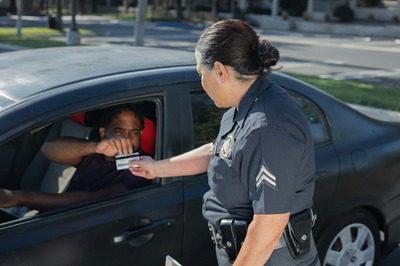How to get driving license in USA
Acquiring a driver’s license in the United States is a significant milestone and involves
several steps that vary slightly depending on the state. Below is a detailed, step-by-step
guide on how to obtain a driving license in the USA, along with some general insights
that apply nationwide.How to get driving license in USA
- Understanding Eligibility and Requirements
Before beginning the process, it’s important to understand the basic eligibility
requirements. While these may vary slightly from state to state, some general
requirements
include:
Minimum Age: In most states, you must be at least 16 years old to apply for a learner’s
permit, with full licenses available to those 18 and older.
Residency:
You must be a resident of the state where you’re applying for the license.
Identification Documents:
You’ll need to provide documents that prove your identity, such as a birth certificate,
Social Security number, proof of residency, and possibly more depending on your
state’s requirements.
Understanding of Traffic Rules:
You should have a basic understanding of traffic laws and rules of the road.
Parental Consent:
If you are under 18, you might need consent from a parent or guardian to apply for a
license.
- Choosing the Type of License
In the United States, there are different types of driving licenses depending on what
type of vehicle you intend to drive:
Class D License:
For driving standard passenger vehicles (cars and trucks).
Commercial Driver’s License (CDL): Required for driving commercial vehicles like buses
and large trucks.
Motorcycle License:
For operating motorcycles.
Provisional/Intermediate License: For new drivers, typically teenagers, with restrictions.
- Obtaining a Learner’s Permit
For first-time drivers, the journey typically begins with obtaining a learner’s permit.
This permit allows you to drive under certain conditions and with the supervision of a
licensed adult.
A. Study the Driver’s Handbook
Each state provides a driver’s handbook or manual, which covers the rules of the road,
road signs, and basic vehicle operation. Study this handbook thoroughly as it will be
the basis for the written test.
B. Pass the Written Test
You must pass a written knowledge test to obtain a learner’s permit. The test usually
covers:
Traffic laws
Road signs
Safe driving practices
Many states offer practice tests online, which can be very helpful in preparing for the
exam.
C. Pass the Vision Test
A vision test is usually required to ensure you can see well enough to drive safely.
If you need corrective lenses, make sure to wear them during the test.
D. Pay the Permit Fee
A fee is usually required to obtain the learner’s permit. The amount varies by state.
E. Supervised Driving Practice
With a learner’s permit, you are typically required to log a certain number of supervised
driving hours. This practice must be done with a licensed adult in the car. Many states
require specific hours to be completed both during the day and at night.
- Enrolling in Driver’s Education
In many states, particularly for teenage drivers, completing a driver’s education course
is mandatory.
Driver’s education usually involves:
Classroom Instruction: Covers traffic laws, safe driving techniques, and the consequences
of unsafe driving.
Behind-the-Wheel Training: Practical driving experience with a certified instructor.
Driver’s education programs can often be completed through high schools, private driving
schools, or online programs.
- Understanding Provisional Licenses (For Minors)
If you are under 18, most states will require you to obtain a provisional or intermediate
license before getting a full driver’s license.
This stage usually includes:
Driving with Restrictions:
You can drive without an adult but with restrictions, such as no driving late at night
or with more than one passenger under a certain age.
Maintaining a Clean Record:
Avoid traffic violations and accidents during this period, as they could delay your
progression to a full license.
- Scheduling the Road Test
Once you have held your learner’s permit for the required time and completed any necessary
driver’s education, you can schedule your road test. The road test evaluates your
ability to operate a vehicle safely and in compliance with traffic laws.
a. Preparation for the Road Test
Vehicle Requirements:
Ensure the vehicle you bring to the test is in good working condition. It must have a
valid registration, insurance, and all required safety features, such as working lights,
brakes, and signals.
Practice:
Focus on mastering skills such as parallel parking, making turns, obeying traffic
signals, and merging onto highways.
b. Taking the Road Test
The road test is conducted by a DMV examiner who will observe and grade your driving
performance.
Key areas include:
Observing traffic signs and signals
Proper lane usage
Safe driving maneuvers (turning, parking, stopping, etc.)
Defensive driving techniques
Stay calm and follow the examiner’s instructions carefully.
- Passing the Road Test
If you pass the road test, congratulations! You’re now eligible to receive your driver’s
license. However,
there are still a few final steps:
a. Submitting Necessary Documents
You’ll need to submit proof of passing the road test along with any additional documents
the DMV requires, such as your learner’s permit, identification, and proof of insurance.
b. Paying the License Fee
There’s usually a fee for the actual driver’s license, which varies by state.
c. Receiving Your License
Depending on your state, you may receive your license on the spot, or it may be mailed to
you. Your license may initially be a probationary or provisional license, especially if
you’re under 18.
- Adhering to State-Specific Rules
Each state has its own specific rules and requirements for obtaining a driver’s license.
It’s crucial to familiarize yourself with the regulations in your state. For example:
California:
Requires drivers under 18 to hold a learner’s permit for at least six months before
applying for a license.
New York:
Requires completion of a pre-licensing course or a driver education course.
Texas: Has a Graduated Driver Licensing (GDL) program that includes multiple phases.
- Understanding Driving Laws and Responsibilities
Once you have your license, it’s essential to fully understand and comply with all
driving laws and responsibilities:
Insurance:
Carry at least the minimum required auto insurance coverage in your state.
Renewals and Updates:
Know when your license expires and the process for renewal. Also, update your license
with your new address if you move.
Traffic Violations:
Be aware of how traffic violations can affect your driving record and potentially lead
to penalties such as fines, license suspension, or higher insurance rates.
- Special Considerations for Non-Citizens
If you are a non-U.S. citizen or a temporary resident, the process may be slightly
different:
International Driving Permits (IDP):
Visitors may drive using an IDP, but if you’re staying long-term, you’ll need to apply
for a U.S. driver’s license.
Documentation: Non-citizens may need to provide additional documentation, such as a visa,
I-94 form, or Employment Authorization Document (EAD).
- Driving Safely and Responsibly
Once you have your driver’s license, the responsibility of driving safely and adhering
to traffic laws rests on you.
Here are some tips:
Avoid Distractions:
Don’t use your phone while driving, and stay focused on the road.
Never Drive Under the Influence: Driving under the influence of alcohol or drugs is
illegal and extremely dangerous.
Follow Speed Limits:
Always adhere to posted speed limits and adjust your speed for road conditions.
Maintain Your Vehicle: Regular maintenance of your vehicle, including oil changes,
tire rotations, and brake checks, is crucial for safe driving.
- Handling Emergencies
As a licensed driver, you should be prepared to handle emergencies on the road:
Accidents:
Know what to do in case of an accident, including how to exchange information, report the
incident, and file an insurance claim.
Breakdowns:
Have a plan for what to do if your vehicle breaks down, such as calling for roadside
assistance.
Health Emergencies:
Know how to respond if you or a passenger experiences a medical emergency while driving.
- Continual Learning and Improvement
Driving is a skill that requires ongoing learning and improvement:
Advanced Driving Courses:
Consider taking advanced driving courses to improve your skills in areas like defensive
driving, winter driving, or driving in heavy traffic.
Staying Updated:
Traffic laws can change, so stay informed about new regulations or changes in driving
laws in your state.
- Reinstating a Suspended or Revoked License
If your license is suspended or revoked, the process to reinstate it typically involves:
Fulfilling the Suspension Requirements:
Complete any required classes or programs, such as a defensive driving course or
substance abuse counseling.
Paying Reinstatement Fees:
There’s often a fee to reinstate your license.
Meeting Specific State Requirements:
Each state has different rules for reinstatement, so you’ll need to follow the guidelines
in your state.
- Renewing Your Driver’s License
Driver’s licenses in the U.S. are not permanent; they expire after a certain period,
usually every 4 to 8 years. The renewal process generally includes:
Completing a Renewal Application:
This can often be done online, by mail, or in person at the DMV.
Paying a Renewal Fee: The fee varies by state.
Vision Test: Some states require a vision test at the time of renewal.
Providing Updated Information: You may need to provide updated proof of residency or
other documents.
- Conclusion
Obtaining a driver’s license in the USA is a multi-step process that requires careful
preparation and adherence to state-specific regulations. The process includes obtaining
a learner’s permit, gaining driving experience, passing a road test, and fulfilling any
additional requirements that your state may have. Once you have your license, it’s
crucial to maintain a good driving record, renew your license as needed, and continually
improve your driving skills. Safe driving is not just a legal requirement, but a
personal responsibility to yourself and others on the road.
With this comprehensive guide, you should be well-prepared to navigate the process of
getting your driver’s license and becoming a responsible driver in the United States.
More > https://imageresizer.com/
https://besterpost.com/how-to-make-blog-quespion-and-answer



